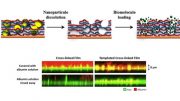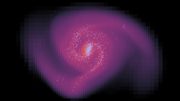
New research has uncovered one-dimensional superconducting stripes at the EuO/KTO(110) interface, a result of the ferromagnetic proximity effect. This discovery highlights the significant influence of magnetism on superconducting states and provides a platform for further exploration of high-temperature superconductivity. This study not only advances our understanding of the intricate relationship between superconductivity and magnetism but also showcases the unique properties of superconducting oxide heterostructures.
A team led by Chen Xianhui and Professor Xiang Ziji from the CAS Key Laboratory of Strongly-Coupled Quantum Matter Physics and the Department of Physics at the University of Science and Technology of China, uncovered a unique superconducting state characterized by one-dimensional superconducting stripes. This state is induced by the ferromagnetic proximity effect in an oxide heterostructure made up of ferromagnetic EuO and (110)-oriented KTaO3 (KTO). Their findings were published in Nature Physics.
The academic community concurs that the emergence of unconventional superconducting pairings is intricately linked to magnetism, particularly in copper oxides and iron-based high-temperature superconductors. Magnetic fluctuations are deemed pivotal in the genesis of high-temperature superconductivity, where the interplay between superconductivity and magnetism gives rise to superconducting states exhibiting unique spatial modulation. Superconducting oxide heterostructures encompassing magnetic structural units emerge as an optimal platform for investigating such superconducting states.
Building upon their prior achievements, the research team delved deeper into the superconductivity of this system and its relationship with the ferromagnetic proximity effect, meticulously adjusting the carrier concentration of the two-dimensional electron gas residing at the interface. They uncovered an intriguing in-plane anisotropy in superconductivity among samples with low carrier concentrations, which nevertheless vanished in samples exhibiting higher carrier concentrations.
Observations of One-Dimensional Superconducting Stripes
The superconductivity transition temperature related to the current direction at the heterojunction interface is caused by the formation of one-dimensional superconducting stripes due to the reduction of superconductivity dimension. Meanwhile, anomalous Hall effect and magnetoresistance hysteresis behavior indicate that the coupling between interfacial conduction electrons and ferromagnetism is affected by band filling. The hybridization of Eu and Ta atomic orbitals within a specific energy range leads to band spin splitting, which is consistent with the experimental results. Therefore, the emergence of one-dimensional superconducting stripes in EuO/KTO(110) heterojunction is confirmed to be caused by the coupling effect between superconductivity and magnetism.
This study reveals the existence of a superconducting stripe phase at the EuO/KTO(110) interface, induced by the ferromagnetic proximity effect. It presents the first unambiguous experimental evidence of exotic superconducting states emerging from the intricate coupling between superconductivity and magnetism at oxide interfaces.
Reference: “Superconducting stripes induced by ferromagnetic proximity in an oxide heterostructure” by Xiangyu Hua, Zimeng Zeng, Fanbao Meng, Hongxu Yao, Zongyao Huang, Xuanyu Long, Zhaohang Li, Youfang Wang, Zhenyu Wang, Tao Wu, Zhengyu Weng, Yihua Wang, Zheng Liu, Ziji Xiang and Xianhui Chen, 11 March 2024, Nature Physics.
DOI: 10.1038/s41567-024-02443-x









Be the first to comment on "Scientists Uncover Unique New 1D Superconducting State"